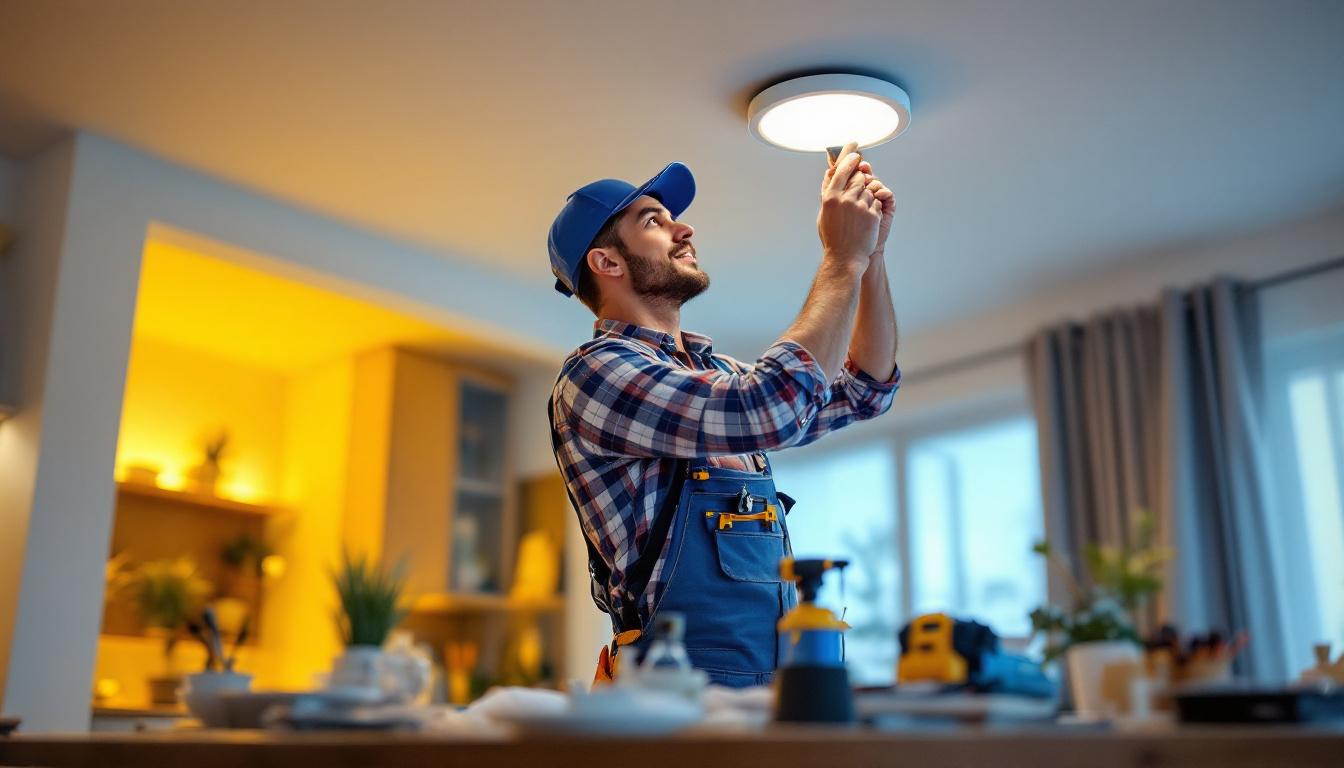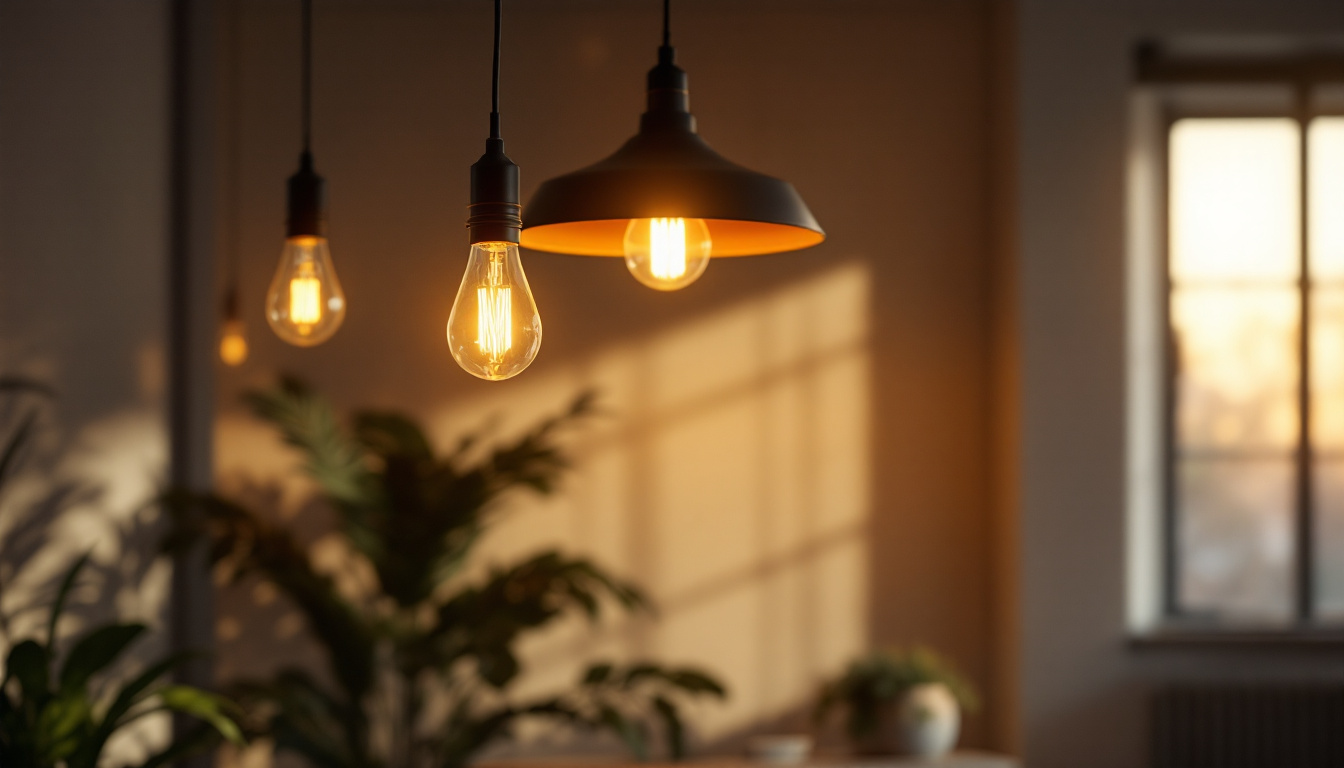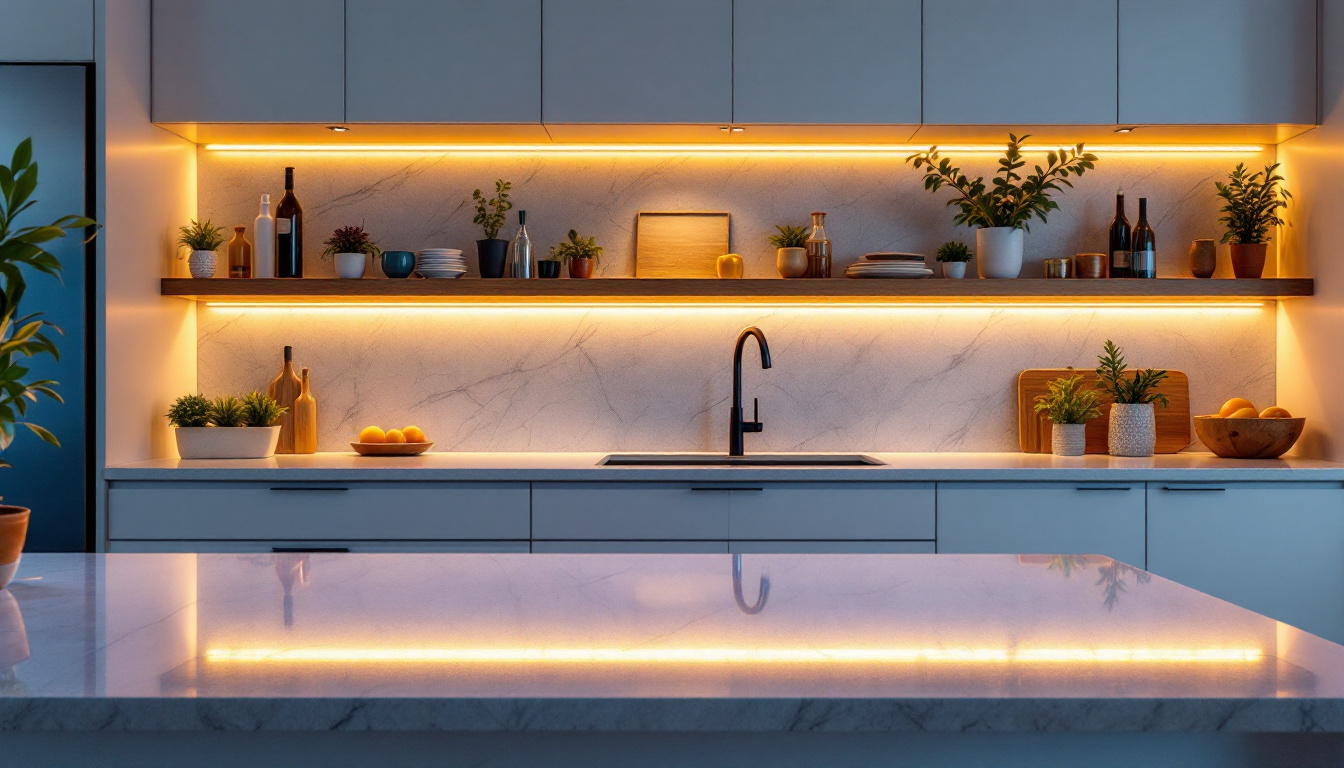
In the ever-evolving world of lighting design, retrofit LED recessed lighting has emerged as a favored choice among homeowners and contractors alike. This innovative lighting solution not only enhances the aesthetic appeal of spaces but also promotes energy efficiency and longevity. For lighting contractors, having the right tools and knowledge about the best retrofit LED recessed lighting options is crucial for delivering high-quality installations. This article delves into the essential tools and considerations for lighting contractors looking to excel in this domain.
Retrofit LED recessed lighting fixtures are designed to fit into existing recessed can housings, making them a convenient option for upgrades. These fixtures provide a seamless transition from traditional incandescent or fluorescent bulbs to energy-efficient LED technology. Understanding the benefits and features of these fixtures is essential for contractors aiming to provide their clients with the best solutions.
One of the primary advantages of retrofit LED recessed lighting is energy efficiency. LED fixtures use significantly less energy than traditional bulbs, which translates to lower electricity bills for homeowners. Additionally, LEDs have a longer lifespan, often lasting up to 25,000 hours or more, reducing the frequency of replacements. This longevity not only saves money but also minimizes the environmental impact associated with manufacturing and disposing of light bulbs.
Another benefit is the versatility of design. Retrofit LED lights come in various styles, colors, and brightness levels, allowing contractors to meet diverse aesthetic preferences and functional requirements. Whether it’s for ambient lighting in a living room or task lighting in a kitchen, there’s a retrofit LED option available. Moreover, many of these fixtures are designed with a sleek, modern look that can enhance the overall décor of a space, making them an attractive choice for both new constructions and renovations.
When selecting retrofit LED recessed lighting, several key features should be taken into account. The color temperature is one of the most important factors, as it affects the mood and ambiance of a space. Options typically range from warm white (2700K) to cool white (5000K), allowing for tailored lighting solutions. Warmer tones can create a cozy atmosphere, ideal for bedrooms and living areas, while cooler tones are often preferred in workspaces for their ability to enhance focus and productivity.
Additionally, the lumen output is crucial in determining the brightness of the fixture. Contractors should assess the specific lighting needs of each space to ensure the selected products provide adequate illumination. Furthermore, dimmability is a feature that many clients appreciate, as it allows for adjustable lighting levels based on the time of day or activity. Some retrofit LED fixtures even come with smart technology integration, enabling users to control lighting remotely via smartphone apps or voice commands, adding an extra layer of convenience and customization to modern living spaces.
Equipping oneself with the right tools is vital for a successful installation of retrofit LED recessed lighting. The following tools are essential for lighting contractors to ensure a smooth and efficient process.
Every contractor should have a set of basic hand tools readily available. This includes a screwdriver set, pliers, and wire strippers. These tools are fundamental for removing old fixtures, making electrical connections, and securing new retrofit lights into place. A reliable flashlight can also be invaluable for illuminating dark spaces during installation. Furthermore, having a utility knife on hand can assist in cutting through insulation or other materials that may obstruct access to the installation area. A tape measure is also crucial for ensuring precise placement of fixtures, allowing for a clean and professional finish.
In addition to hand tools, power tools can significantly expedite the installation process. A cordless drill is particularly useful for drilling holes for new fixtures or securing mounting brackets. A reciprocating saw may also be necessary for cutting through drywall or ceilings if modifications are needed to accommodate new lighting. Moreover, a laser level can be an invaluable addition to your toolkit, ensuring that fixtures are installed evenly and at the correct height, which is especially important in spaces with multiple lights. This not only enhances the aesthetic appeal but also ensures that the lighting is effective and functional.
Before finalizing any installation, testing equipment is essential to ensure everything is functioning correctly. A multimeter can be used to check voltage and continuity, helping to troubleshoot any electrical issues. Additionally, a light meter can help measure the brightness of the installed fixtures, ensuring they meet the desired specifications. It’s also wise to have a circuit tester on hand to verify that the power is off before beginning work, which is critical for safety. Finally, a voltage tester can provide peace of mind by confirming that the electrical connections are secure and functioning as intended, preventing potential hazards down the line.
Having the right tools is only part of the equation; understanding the installation process is equally important. Below is a step-by-step guide to installing retrofit LED recessed lighting.
Before starting the installation, it is crucial to prepare the workspace. This includes turning off the power to the existing fixtures at the circuit breaker to ensure safety. Next, remove the old bulbs and fixtures, taking care to note the wiring configuration for reference.
Once the old fixtures are removed, it’s time to wire the new retrofit LED lights. Carefully follow the manufacturer’s instructions to connect the wiring. Typically, this involves connecting the hot wire (black) to the corresponding wire on the new fixture, the neutral wire (white) to its counterpart, and grounding the fixture as necessary.
After the wiring is complete, the next step is to secure the retrofit fixtures into place. Most retrofit kits come with clips or springs that allow for easy installation into the existing housing. Ensure that the fixtures are flush with the ceiling for a clean and professional appearance.
With a plethora of retrofit LED products available on the market, selecting the right ones can be daunting. Here are some tips to guide lighting contractors in making informed choices.
When selecting retrofit LED recessed lighting, it is essential to consider the reputation of the brand. Established manufacturers often provide quality assurance and warranties, which can be beneficial for contractors and their clients. Researching customer reviews and ratings can also provide insights into the performance and reliability of specific products.
Energy efficiency ratings, such as the Energy Star certification, are indicators of a product’s performance. Choosing Energy Star-rated retrofit LED lights ensures that they meet strict efficiency guidelines, which can be a selling point for environmentally conscious clients.
Many homeowners prefer the flexibility of dimmable lighting. When selecting retrofit LED fixtures, ensure they are compatible with existing dimmer switches or consider recommending new dimmers designed for LED use. This compatibility can enhance the overall lighting experience and satisfaction for clients.
Even with the best tools and products, challenges can arise during the installation of retrofit LED recessed lighting. Being prepared for these common issues can help contractors navigate them smoothly.
Electrical problems can sometimes occur, such as flickering lights or inadequate power supply. If flickering is observed, it may be due to incompatible dimmer switches or loose connections. Contractors should ensure all wiring is secure and that dimmers are rated for LED use.
Another challenge can be related to the size and fit of the retrofit fixtures. Occasionally, the new fixtures may not fit snugly into the existing housings. In such cases, using trim kits or adapters can help achieve a proper fit, ensuring a polished look.
Managing client expectations is crucial in any project. Communication is key; contractors should clearly explain the benefits and limitations of retrofit LED recessed lighting. Providing clients with samples of color temperatures and brightness levels can help them make informed decisions and ensure satisfaction with the final result.
The lighting industry is constantly evolving, and staying informed about future trends can give contractors a competitive edge. Here are some trends to watch in retrofit LED recessed lighting.
As technology advances, smart lighting solutions are becoming increasingly popular. Retrofit LED recessed lights that can be controlled via smartphone apps or voice-activated systems are in demand. Contractors should consider offering smart lighting options to clients looking for modern, tech-savvy solutions.
Human-centric lighting, which focuses on enhancing well-being through light, is gaining traction. This approach considers factors like circadian rhythms and mood enhancement. Contractors can explore retrofit LED products that offer tunable white light, allowing clients to adjust color temperatures throughout the day.
With a growing emphasis on sustainability, products that prioritize eco-friendly materials and manufacturing processes are likely to be favored. Contractors should seek out retrofit LED options that align with these values, appealing to environmentally conscious consumers.
Retrofit LED recessed lighting presents a wealth of opportunities for lighting contractors. By understanding the benefits, having the right tools, and being knowledgeable about the installation process, contractors can provide exceptional service to their clients. Staying informed about trends and addressing common challenges will further enhance their expertise in this dynamic field. With the right approach, lighting contractors can illuminate spaces beautifully and efficiently, ensuring satisfaction for both themselves and their clients.
Ready to take your lighting projects to the next level? At LumenWholesale, we provide lighting contractors with the highest quality, spec-grade retrofit LED recessed lighting products at unbeatable wholesale prices. Say goodbye to local distributor markups and hello to superior lighting solutions that meet the highest industry standards. With free shipping on bulk orders, you can stock up on reliable, high-performance lighting without any hidden fees. Elevate your installations and delight your clients with the perfect blend of quality, affordability, and convenience. Discover the best value in wholesale lighting by visiting LumenWholesale today.

Discover why fluorescent kitchen fixtures are essential for any successful lighting project.

Discover how Pendant Lights 3 is revolutionizing the lighting industry with its innovative design and cutting-edge technology.

Discover how LED amber lighting is revolutionizing the industry for contractors by enhancing energy efficiency and reducing costs.

Discover the common pitfalls lighting contractors face when installing under counter lights in kitchens.